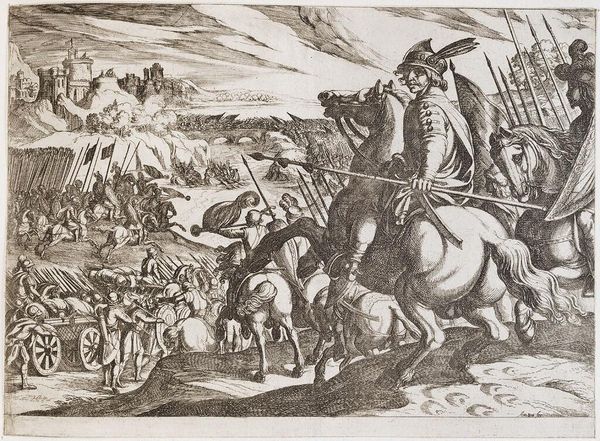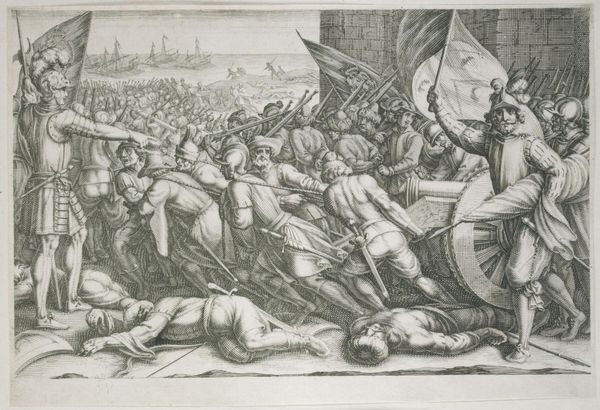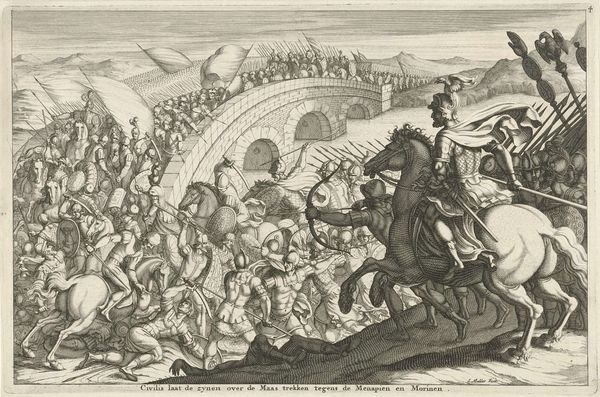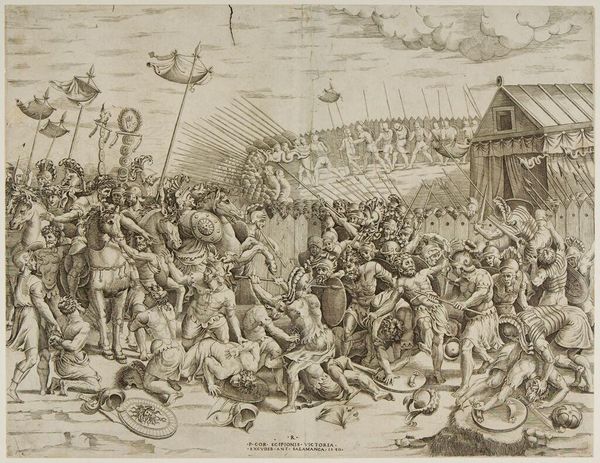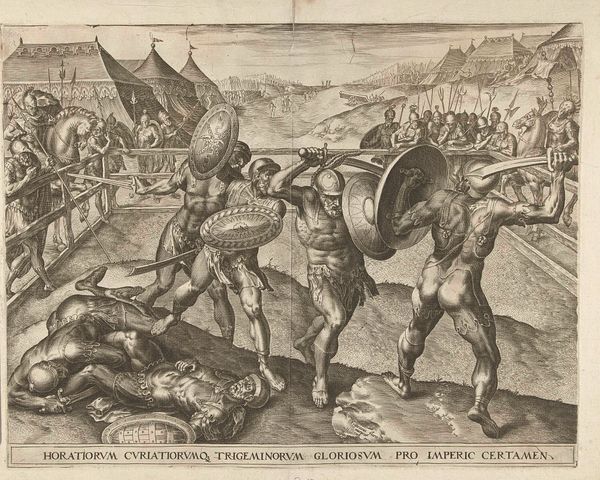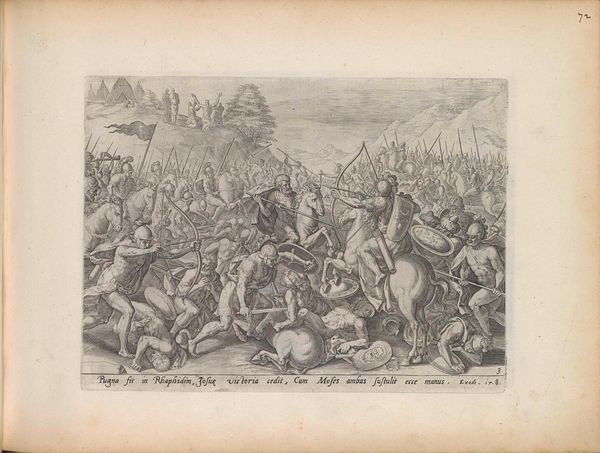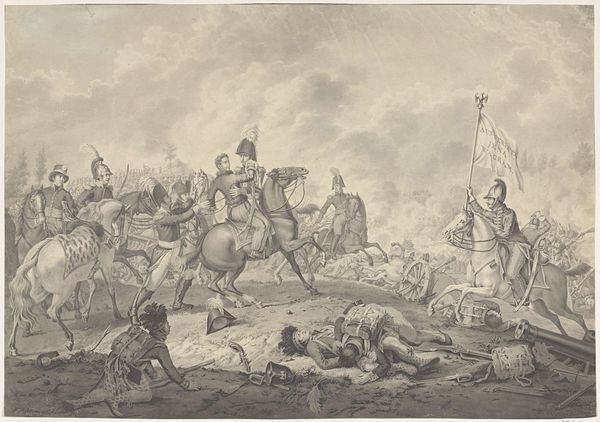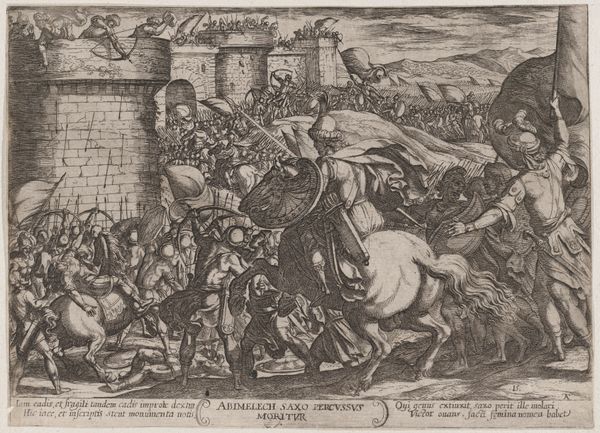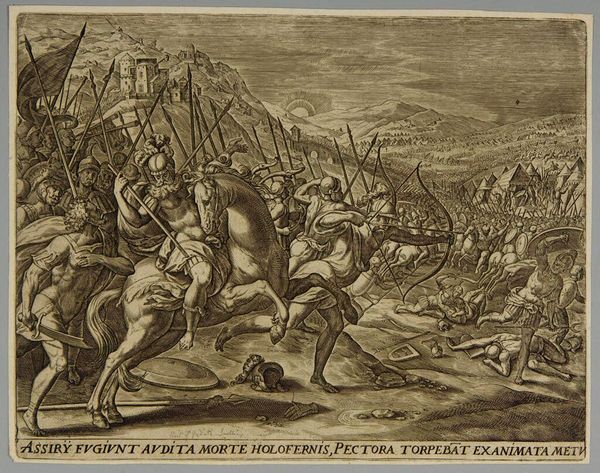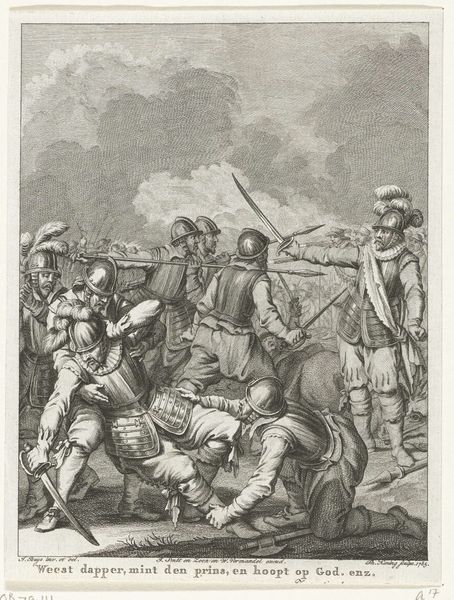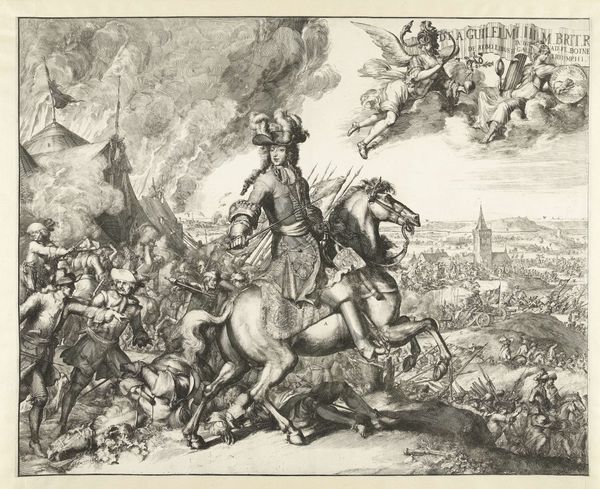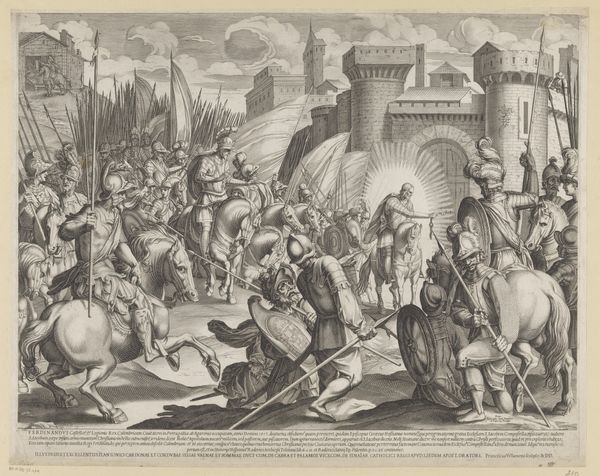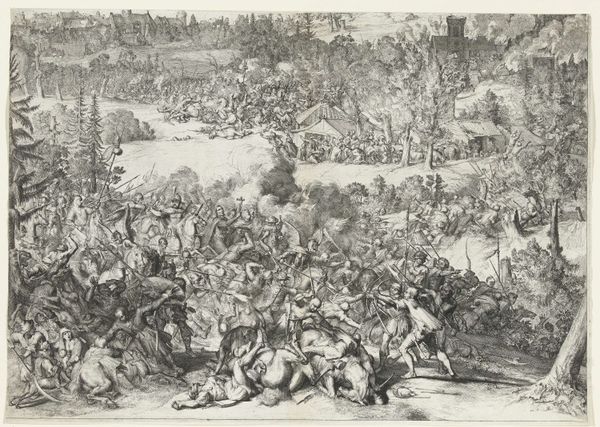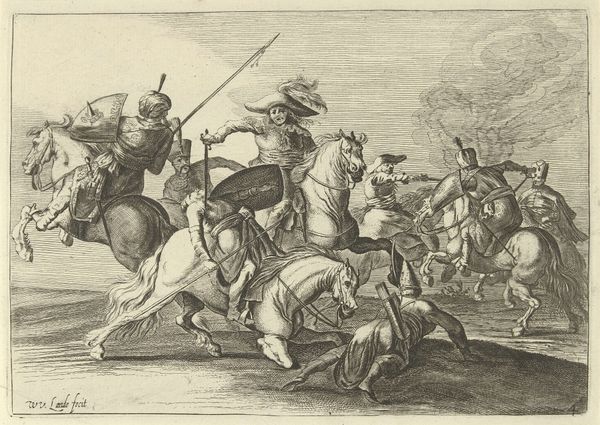
engraving
#
baroque
#
dutch-golden-age
#
landscape
#
cityscape
#
history-painting
#
engraving
Dimensions: height 222 mm, width 332 mm
Copyright: Rijks Museum: Open Domain
Editor: Here we have Joseph Mulder’s engraving from 1684, “Civilis laat het land onder water lopen, 69-70.” It depicts a scene of battle within a flooded landscape. What I find really striking is the incredible density of detail, and how that communicates the labor and craftsmanship inherent to engraving. How do you see this work? Curator: I see this as an excellent example of how an artist's choices regarding materials and processes reveal the cultural and social conditions of the time. Think about the nature of engraving itself – a painstaking process that requires immense skill and labor. The *process* of its creation is paramount, making it a very deliberate artifact. How does the means of its production affect the image’s cultural value in your opinion? Editor: I imagine that its reproducible nature as an engraving would have allowed the image, and therefore the story it tells, to reach a wider audience, standardizing certain ideas of Dutch history for the populace. Curator: Precisely. This reproductive aspect is central to the work’s material impact. Engravings like these democratized images and narratives. By using this specific medium, Mulder facilitated broader access to and consumption of these heroic tales. What sort of questions arise when you consider the cultural narratives promulgated in this reproducible form? Editor: Thinking about that wider distribution and its function as essentially propaganda for this historical narrative, it's interesting to wonder about who made these images. Was there a 'guild' that standardized the engraving-making process? The uniformity suggests that these crafts people's individual voices might not be as easily discernable. Curator: Precisely. It speaks volumes about the social organization of art production at the time, where skilled artisans might contribute to a larger project. In looking at the material of the print, and the way the process impacted the end product, the artwork really underscores the complex interactions between art, labor, and history. Editor: I now have a greater appreciation for how this Dutch Golden Age artwork, viewed through the lens of materials and their social contexts, offers so much information about cultural narratives. Curator: Indeed. We’ve come to understand it as more than just a representation of a historical event, but also an artifact embedded within specific social, economic, and technical realities.
Comments
No comments
Be the first to comment and join the conversation on the ultimate creative platform.
